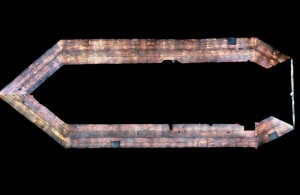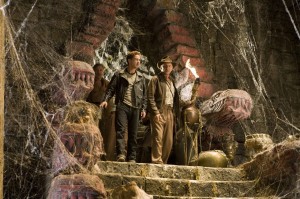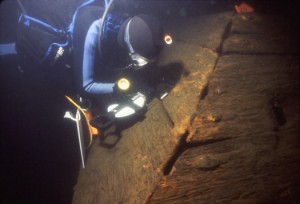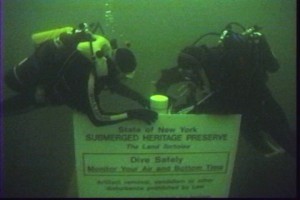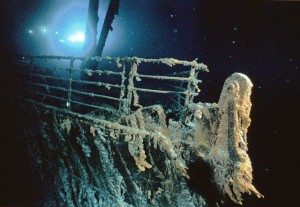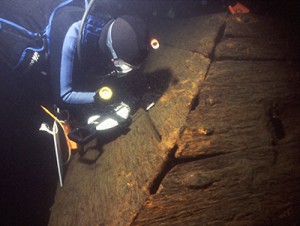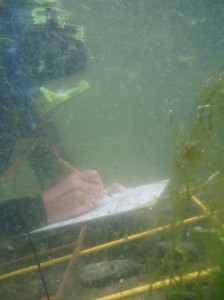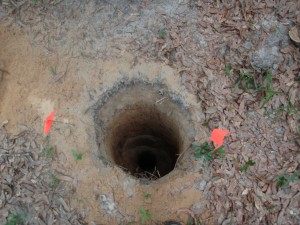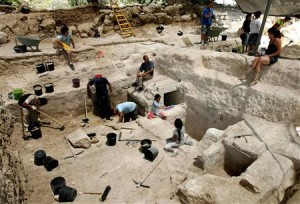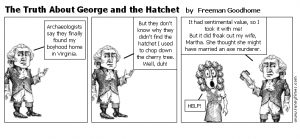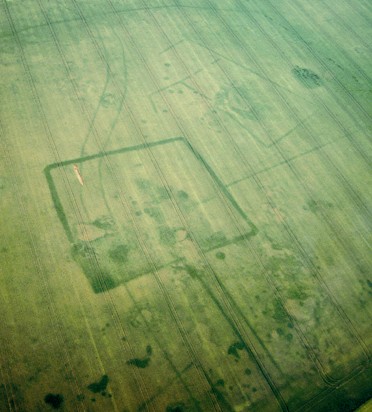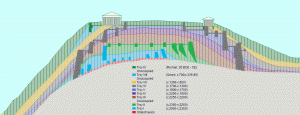On the surface, the calm exterior of archaeology is that of scrapping away at an already eroding mass of earth, with the hopes of revealing remnants of ancient pottery or jewelry. Contrary to Hollywood’s idea of archaeology and exploration, most people would be more incline to assume that the life of an archaeologist is lacking in glamour. However, within the profession there is still adventure to be found, especially by the likes of Joseph Zarzynski.
Zarzynski is an archaeologist in the purest sense, studying and excavating the hardest to reach areas in search of answers to better understand previous life. Although the life of Zarr, as he is referred to by his friends and equally admirable crew, is not exactly the movie style action-adventure that is implied, it is picturesque. 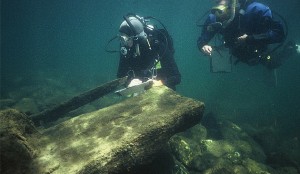
Zarr and his crew dive deep into Lake George here to better observe a long lost ship wreck, the 1758 Land Tortoise Radeau. Here really is where the beauty of an archaeological project may be found. It is where the mundane procedures of a respectful and well-thought out excavation meet the sheer excitement and wonder of identifying and examining this lost scene. The tedious process of safety procedures such as decompression stops and archaeological necessities like mapping the area culminate with the awe of investigating such a fantastic wreck to create something that everyone can care appreciate.
What becomes attractive to those who can appreciate the archaeological significance of such a find such as archaeology students and Zarr’s fellow archaeologists is the history that is preserved through the rotting wood and creaky boards of the ship. It is said that what is written down in history is that which is meant to be known, but archaeological finds reveal that which people did not want future historians to discover. After much mapping together of the sunken radeau ship and research of what the area was years ago, Zarr’s team was able to successfully construct a mosaic of the structure, using photographs taken underwater alongside the more modern tool of Photoshop.
The efforts of the crew eventually added to the formative historical analysis that the ship was purposefully sunk in an effort to preserve it for later use, but settled lower than intended. This was described in soldier’s journals, but the condition and fate of the radeau that was left was something that could only be exhumed through the scientific processes of archaeology.
In addition to the sole scientific and historical benefits of such a feat, the archaeological project also displayed to the public the importance of such work. The general public of the Lake George Beach area now has a better understanding of their origins, and an enriched sense of identity with the addition of the wreck into the National Registrar of Historic Places. The undertaking of the archaeological excavation of the Land Tortoise ultimately served as a link between the archaeology of real life and movies, and of the mundane and fantastic.
image 1 url: http://www.lakegeorgemirrormagazine.com/wp-content/uploads/2011/09/bateauxDivers.jpg
image 2 url: http://www.blacklaserlearning.com/adventure/wp-content/uploads/2013/07/Radeau_Mosaic.jpg
Dec.ny.gov. 2013. The Land Tortoise Underwater Preserve Site – NYS Dept. of Environmental Conservation. [online] Available at: http://www.dec.ny.gov/lands/5076.html [Accessed: 1 Oct 2013]
Lakegeorgemirrormagazine.com. 2013. Joe Zarzynski | Lake George Mirror Magazine. [online] Available at: http://www.lakegeorgemirrormagazine.com/tag/joe-zarzynski/ [Accessed: 1 Oct 2013].
Blacklaserlearning.com. 2013. Shipwrecks: Lake George Radeau | Vince Capone Marine Science and Adventure. [online] Available at: http://www.blacklaserlearning.com/adventure/lake-george-radeau/ [Accessed: 1 Oct 2013].

